Filter by
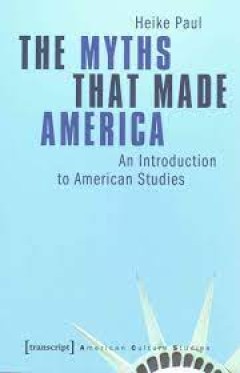
The Myths That Made America : An Introduction to American Studies
This essential introduction to American studies examines the core foundational myths upon which the nation is based and which still determine discussions of US-American identities today. These myths include the myth of »discovery,« the Pocahontas myth, the myth of the Promised Land, the myth of the Founding Fathers, the melting pot myth, the myth of the West, and the myth of the self-made…
- Edition
- -
- ISBN/ISSN
- 9783837614855
- Collation
- 456 halaman
- Series Title
- American Culture Studies
- Call Number
- 900 PAU m
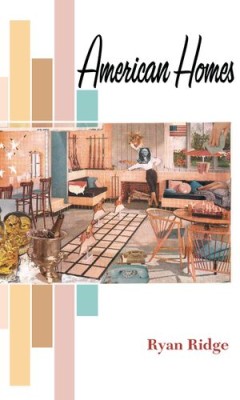
American Homes
Poetry / Fiction / Art / Aphorisms. American Homes incorporates poetry, prose, and various schematic devices, including dozens of illustrations by the artist Jacob Heustis, to create a cracked narrative of the domestic spaces we inhabit.
- Edition
- -
- ISBN/ISSN
- 9780472900176
- Collation
- -
- Series Title
- -
- Call Number
- 800 RID a

Europe (in theory)
Europe (in Theory) is an innovative analysis of eighteenth- and nineteenth-century ideas about Europe that continue to inform thinking about culture, politics, and identity today. Drawing on insights from subaltern and postcolonial studies, Roberto M. Dainotto deconstructs imperialism not from the so-called periphery but from within Europe itself. He proposes a genealogy of Eurocentrism that ac…
- Edition
- -
- ISBN/ISSN
- 9781478091417
- Collation
- 288 halaman
- Series Title
- -
- Call Number
- 800 DAI e

Mongrel Nation : Diasporic Culture and the Making of Postcolonial Britain
Mongrel Nation surveys the history of the United Kingdom's African, Asian, and Caribbean populations from 1948 to the present, working at the juncture of cultural studies, literary criticism, and postcolonial theory. Ashley Dawson argues that during the past fifty years Asian and black intellectuals from Sam Selvon to Zadie Smith have continually challenged the United Kingdom's exclusionary def…
- Edition
- -
- ISBN/ISSN
- 9780472099917
- Collation
- -
- Series Title
- -
- Call Number
- 900 DAW m
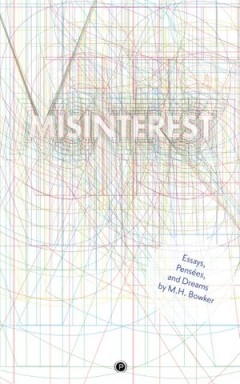
Misinterest : Essays, Pensées, and Dreams
"The term “interest” lacks a precise antonym. In English, we have “disinterested” and “uninteresting,” but we want for a term that denotes robust opposition to interest. The same appears to hold true in every other language (as far as we know). Interest’s missing antonym reflects not merely a widespread lexical oversight, but a misrecognition of interest’s complete and exact mea…
- Edition
- -
- ISBN/ISSN
- 9781950192298
- Collation
- -
- Series Title
- -
- Call Number
- 800 BOW m
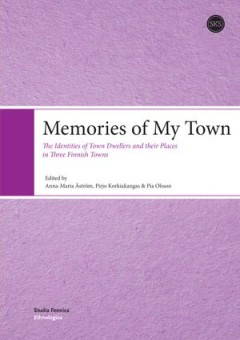
Memories of My Town : The Identities of Town Dwellers and Their Places in Thr…
Memories of My Town is an exploration into how town dwellers experience their environment in a complicated way. As people in urban milieus relate themselves to the environment, this takes place on many levels, where especially the time level becomes problematic. The urban buildings and settings can be looked upon as a kind of collective history, as carriers or witnesses of times past. But it is…
- Edition
- -
- ISBN/ISSN
- 9789518580198
- Collation
- 249 halaman
- Series Title
- Studia Fennica Ethnologica, 8
- Call Number
- 800 MEM

Matches : a Light Book
Through the prism of criticism, the modalities of thinking form a spectrum: on one end, systematic exposition, on the other, the fragment. It is the latter, fragmentary approach that distinguishes Matches—an investigation that does not focus on a single theme developed in all its aspects but, rather, on a constellation of themes in art, literature, philosophy, science, social and political th…
- Edition
- -
- ISBN/ISSN
- 9781950192212
- Collation
- -
- Series Title
- -
- Call Number
- 800 CHR m
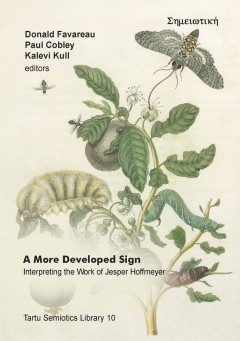
A More Developed Sign : Interpreting The Work of Jesper Hoffmeyer
For more than 40 years, Jesper Hoffmeyer has been committed to the idea of developing “a semiotics of nature, or biosemiotics as he chose to call this effort, that could intelligibly explain how all the phenomena of inherent meaning and signification in living nature – from the lowest level of sign processes in unicellular organisms to the cognitive and social behavior of animals – can em…
- Edition
- -
- ISBN/ISSN
- 9789949199457
- Collation
- 334 halaman
- Series Title
- -
- Call Number
- 800 FAV m
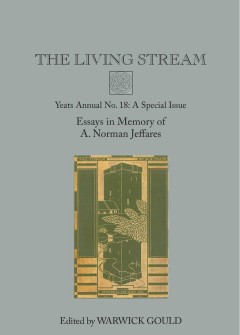
The Living Stream Yeats Annual No. 18 : A Special Issue
Memories of the man are shared by Seamus Heaney, Christopher Rush and Colin Smythe, who compiles a bibliography of Jeffares’s work. Terence Brown, Neil Corcoran, Warwick Gould, Joseph M. Hassett, Phillip L. Marcus, Ann Saddlemyer, Ronald Schuchard, Deirdre Toomey and Helen Vendler offer essays on such topics as Yeats and the Colours of Poetry, Yeats’s Shakespeare, Yeats and Seamus Heaney, L…
- Edition
- -
- ISBN/ISSN
- 9781909254374
- Collation
- 396 halaman
- Series Title
- Yeats Annual
- Call Number
- 800 LIV
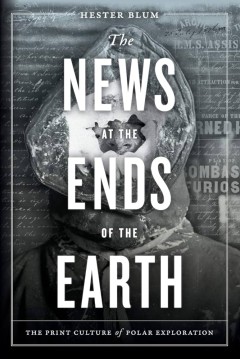
The News at the Ends of the Earth : The Print Culture of Polar Exploration
From Sir John Franklin's doomed 1845 search for the Northwest Passage to early twentieth-century sprints to the South Pole, polar expeditions produced an extravagant archive of documents that are as varied as they are engaging. As the polar ice sheets melt, fragments of this archive are newly emergent. In The News at the Ends of the Earth Hester Blum examines the rich, offbeat collection of pri…
- Edition
- -
- ISBN/ISSN
- 9781478003229
- Collation
- 328 halaman
- Series Title
- -
- Call Number
- 800 BLU m
 Computer Science, Information & General Works
Computer Science, Information & General Works  Philosophy & Psychology
Philosophy & Psychology  Religion
Religion  Social Sciences
Social Sciences  Language
Language  Pure Science
Pure Science  Applied Sciences
Applied Sciences  Art & Recreation
Art & Recreation  Literature
Literature  History & Geography
History & Geography